The view at the deserted landing was spectacular: a low sun was blazing and reflecting off the moving water. It was blowing already from the northeast – small craft advisory, and Kingfisher is on the small end of qualifying in that category. Weather reports had quite a wide range, from 10-15 knots to 20-25 knots. The passage to Bull Island would be fast in these conditions. On the way to the landing, I saw my neighbors Laura and Randy Dixon, and he asserted I would have a big tide courtesy of this wind. I tucked this data away for use on the sail. I took extra care on the rigging, flattening out the sail, stowing and securing gear for the island walk, and cinching my hat cords.
I had sailed these same waters a couple of weeks ago with friend Jim Cubie along in his sailing craft. We had planned for some time to make the trip to the island, and had an easy day of sailing out with a west wind to the NE point, and a return with south wind and incoming tide, the winds never rising over 10 knots. Jim has a very interesting craft – a Hobie that is part kayak outfitted with roller reefing sail, outriggers, and a peddle propulsion system as auxiliary, along with a kayak paddle. 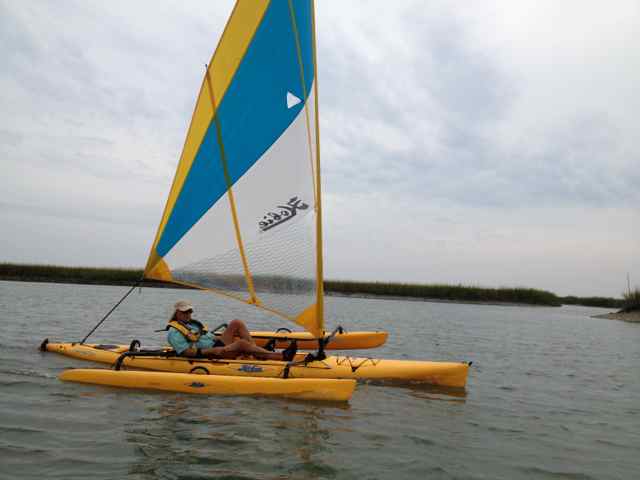 Jim shared with me about a book I had never heard of – North with the Spring by Edwin Way Teale. He spent a year traveling along the eastern United States, and wrote a chapter about his week on Bull Island. It was a surprise to hear about this book, and Jim generously copied and sent me the chapter. Teale was obviously a skilled naturalist, and his accounts of the island were fascinating.
Jim shared with me about a book I had never heard of – North with the Spring by Edwin Way Teale. He spent a year traveling along the eastern United States, and wrote a chapter about his week on Bull Island. It was a surprise to hear about this book, and Jim generously copied and sent me the chapter. Teale was obviously a skilled naturalist, and his accounts of the island were fascinating.
Kingfisher and I set out briskly through Andersonville Creek, 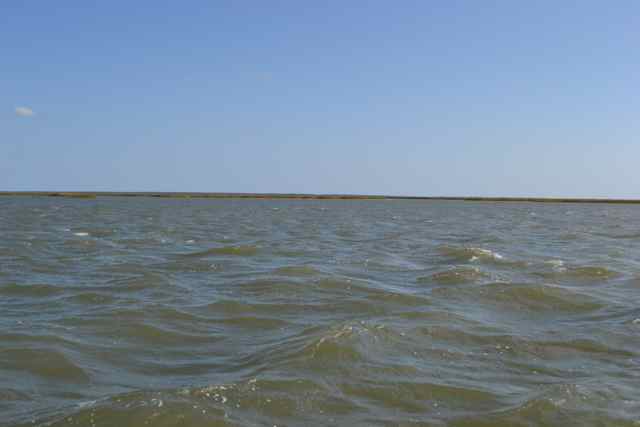 encountering a number of outboards setting shrimp poles near the banks, or leaving poles in the boat and fishing instead. I anticipated the winds and waves would keep shrimpers off the Bay, and that assumption proved correct. Near the Shark Hole a dolphin rose close off the port aft quarter as our speed continued to pick up. We planed out into the open water, and passed a jonboat that had taken a look and was running in. With Randy’s comment on the tide, even though I was just 1.5 hours from the ebb, I set my course across Shortcut Shoal. We had the wind and waves at our beam, and our draft was even shallower due to constant planing and surfing. It was the perfect conditions for our maximum speed. Kingfisher was screaming across these waves, and I added my own screams to this exciting ride. It lasted for quite a while, but yet not long enough as we entered the waters of Bull Creek and bore off dead downwind toward the distant mouth of Summerhouse Creek and the public dock.
encountering a number of outboards setting shrimp poles near the banks, or leaving poles in the boat and fishing instead. I anticipated the winds and waves would keep shrimpers off the Bay, and that assumption proved correct. Near the Shark Hole a dolphin rose close off the port aft quarter as our speed continued to pick up. We planed out into the open water, and passed a jonboat that had taken a look and was running in. With Randy’s comment on the tide, even though I was just 1.5 hours from the ebb, I set my course across Shortcut Shoal. We had the wind and waves at our beam, and our draft was even shallower due to constant planing and surfing. It was the perfect conditions for our maximum speed. Kingfisher was screaming across these waves, and I added my own screams to this exciting ride. It lasted for quite a while, but yet not long enough as we entered the waters of Bull Creek and bore off dead downwind toward the distant mouth of Summerhouse Creek and the public dock.
This wide waterway behind the island provided the cavern for the northeast wind to whip unencumbered, coming all the way across the Bay. We ran downwind in the bunched up waves. A boat was anchored perhaps halfway to the dock, and one of the men pulled up a whiting as we cruised past. Several boats appeared ahead fishing in the lee of the government wharf, and I rounded up and began my preparations for dropping sail, perhaps a bit too casually: when I looked up we were closing with the creek bank. I tried vainly to sheet in and pick up speed to tack, but the crunch of the daggerboard on oysters sealed our fate as we ground to a halt. I yanked the board up, and so “anchored” I dropped sail. The rudder also took some abuse, and later I even found a piece of oyster embedded in the leading edge. 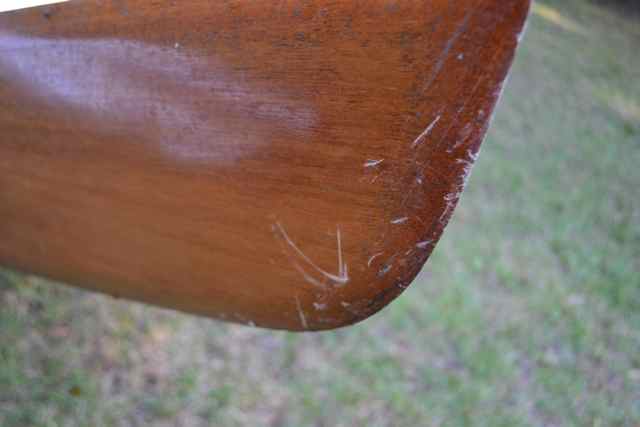 Pushing off with my paddle, we coasted down to the island side of the dock for securing. After changing clothes I began my island walk.
Pushing off with my paddle, we coasted down to the island side of the dock for securing. After changing clothes I began my island walk.
Island Cat was at the dock, and there would be passengers on the island. 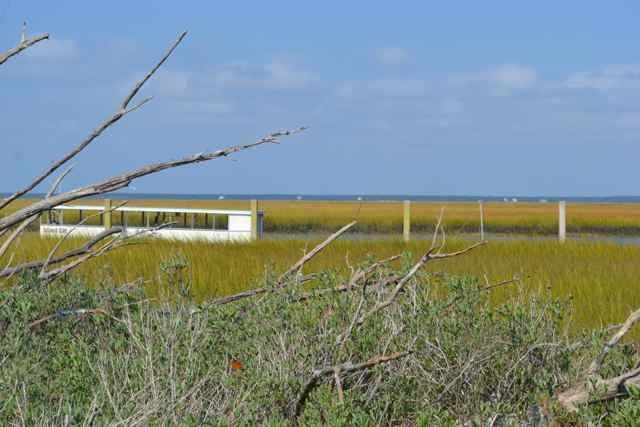 WIth the strong wind and sunny skies it would be a great day for visitors. At the upper edge of the marsh goldenrod splashed vibrant yellow as just one of the fall wildflowers blooming on the island.
WIth the strong wind and sunny skies it would be a great day for visitors. At the upper edge of the marsh goldenrod splashed vibrant yellow as just one of the fall wildflowers blooming on the island. 
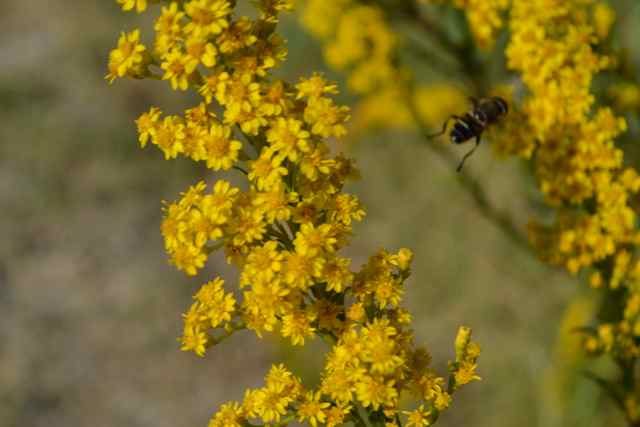 I ran into Island Cat‘s mate Nick, and he told me they had 25 people on the island. Just a little up the road was Will Christenson, or Captain Will as he is known to his passengers. He is an excellent naturalist, and like all good teachers an eager student.
I ran into Island Cat‘s mate Nick, and he told me they had 25 people on the island. Just a little up the road was Will Christenson, or Captain Will as he is known to his passengers. He is an excellent naturalist, and like all good teachers an eager student. 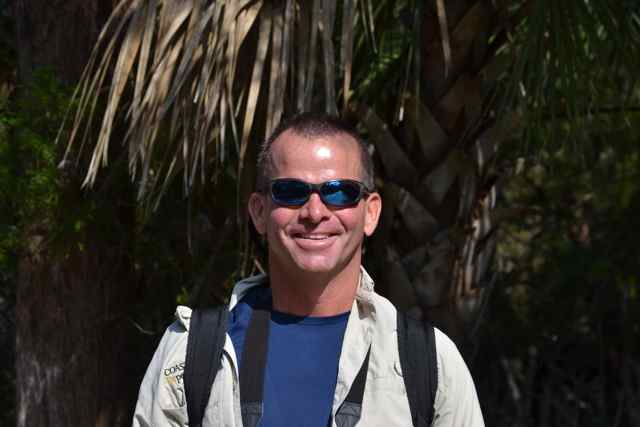 We both use photography as part of natural history study. He asked about my plan on the island, and I asked him what was happening. He mentioned the raptors: eagles, falcons, marsh hawks.
We both use photography as part of natural history study. He asked about my plan on the island, and I asked him what was happening. He mentioned the raptors: eagles, falcons, marsh hawks.
We parted ways, and I headed past the picnic area. The island formerly had huge loblolly pines prior to Hurricane Hugo, and Teale commented on the pollen in the spring from these pines, their “shoes grew yellow with this arboreal dust.” I recalled several of these colossal pines by the small dike passing over toward the Dominick House, and noticed the massive stump of one serving as the planter for a large wax myrtle. 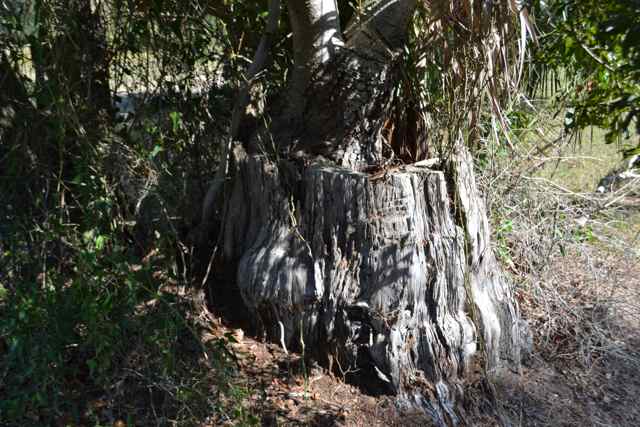 Teale stayed at the Dominick House, and mentioned Mrs. Moffitt’s excellent southern cooking including “hush puppies, conch stew, fried sea trout, and sweet potato pie”.
Teale stayed at the Dominick House, and mentioned Mrs. Moffitt’s excellent southern cooking including “hush puppies, conch stew, fried sea trout, and sweet potato pie”.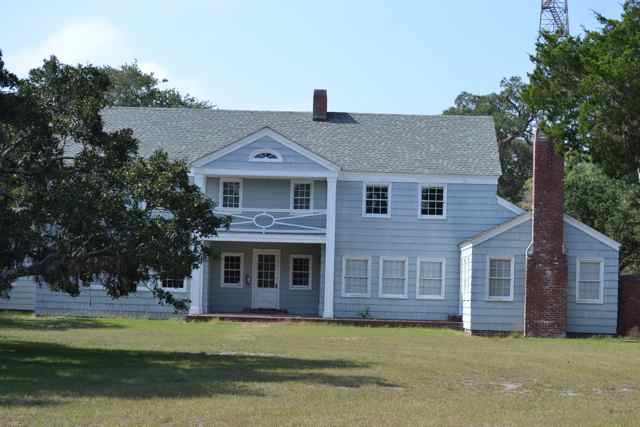
I took the right on Summerhouse Road, and noticed from the absence of human footprints that no one had proceeded me on this trail earlier in the day. At the intersection with the Turkey Walk Trail, I took a look into the Summerhouse Ponds, but not before a kingfisher made a noisy fuss and flew away to a perch in the distance. 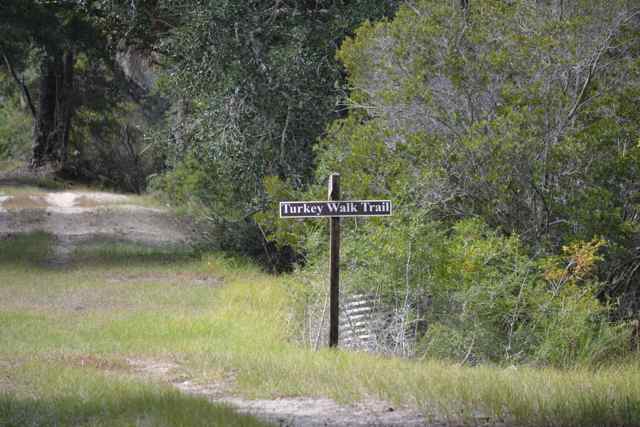 Several well worn paths from alligators crossed the road, traversing from marsh on the west, and Upper Summerhouse Pond to the east. Inspecting a path to the west, its terminus was a pool right on the edge of the marsh.
Several well worn paths from alligators crossed the road, traversing from marsh on the west, and Upper Summerhouse Pond to the east. Inspecting a path to the west, its terminus was a pool right on the edge of the marsh. 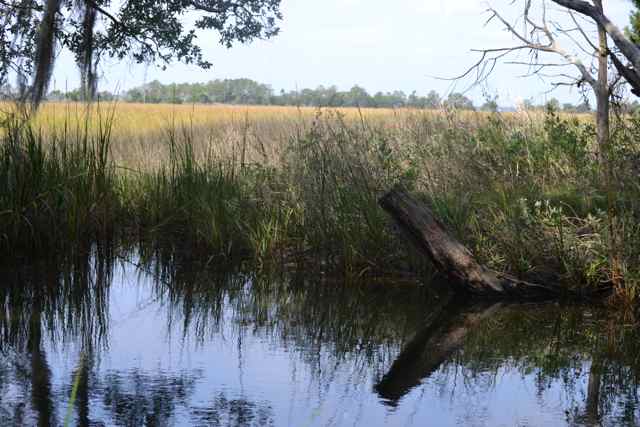 Arriving at the high dike overlooking Upper Summerhouse Pond, another kingfisher sent the alarm, and before getting a good look an alligator plunged into the dark waters. The wind was blowing briskly down the pond from the other end, and the observation tower near the Dominick House provided a landmark in the distance.
Arriving at the high dike overlooking Upper Summerhouse Pond, another kingfisher sent the alarm, and before getting a good look an alligator plunged into the dark waters. The wind was blowing briskly down the pond from the other end, and the observation tower near the Dominick House provided a landmark in the distance. 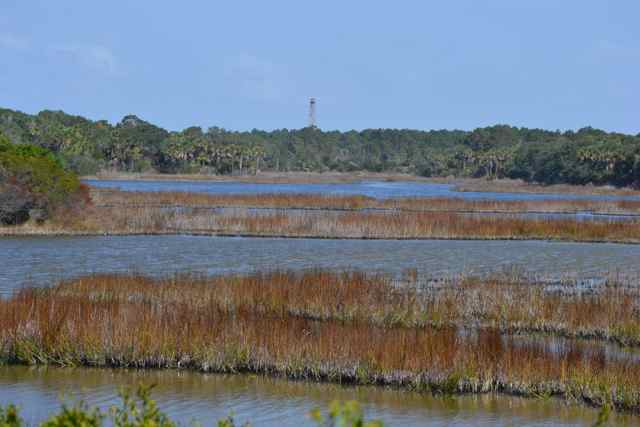 Exploring off the dike toward the marsh, I negotiated through a sandy area with dune devil-joints ready to hop up and impale, and viewed the hammocks along Summerhouse Creek rising prominently above the marsh.
Exploring off the dike toward the marsh, I negotiated through a sandy area with dune devil-joints ready to hop up and impale, and viewed the hammocks along Summerhouse Creek rising prominently above the marsh.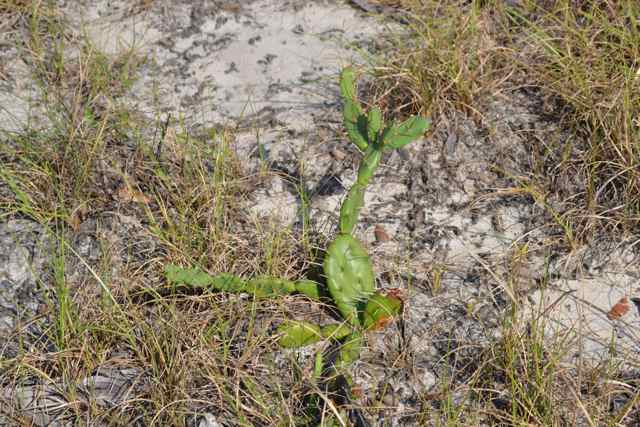
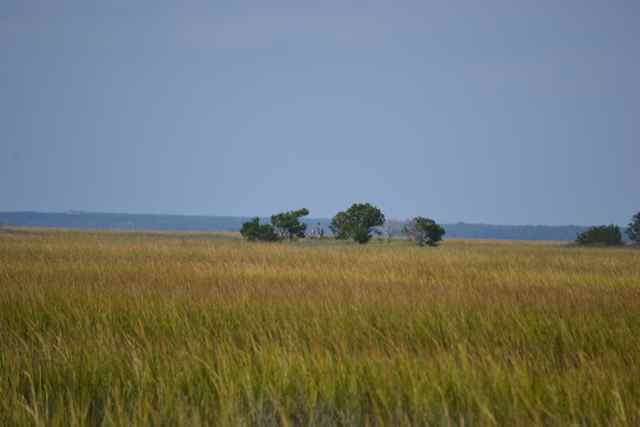 Connecting with Mills Road, I continued south, now back in the maritime forest. The limbs of live oaks created a canopy in places, recalling the pre-Hugo time when the maritime forest was in its glory.
Connecting with Mills Road, I continued south, now back in the maritime forest. The limbs of live oaks created a canopy in places, recalling the pre-Hugo time when the maritime forest was in its glory.  I’m sure it was spectacular during Teale’s visit – his descriptions are vivid. Yet I wonder what it looked like before the live oakers removed thousands of live oak trees, or during John Lawson’s brief visit. Or the thousands of years when Native Americans used it as a hunting island. Beyond I came to the beach access path, and was glad to see it had been mowed some time during the season. Off the beaten path, it is not hard on Bull Island to pick up a tick or two. Pre-Hugo, the tick population was impressive. Teale commented on it, noting that the island was one of the most heavily infested spots in the country.
I’m sure it was spectacular during Teale’s visit – his descriptions are vivid. Yet I wonder what it looked like before the live oakers removed thousands of live oak trees, or during John Lawson’s brief visit. Or the thousands of years when Native Americans used it as a hunting island. Beyond I came to the beach access path, and was glad to see it had been mowed some time during the season. Off the beaten path, it is not hard on Bull Island to pick up a tick or two. Pre-Hugo, the tick population was impressive. Teale commented on it, noting that the island was one of the most heavily infested spots in the country.
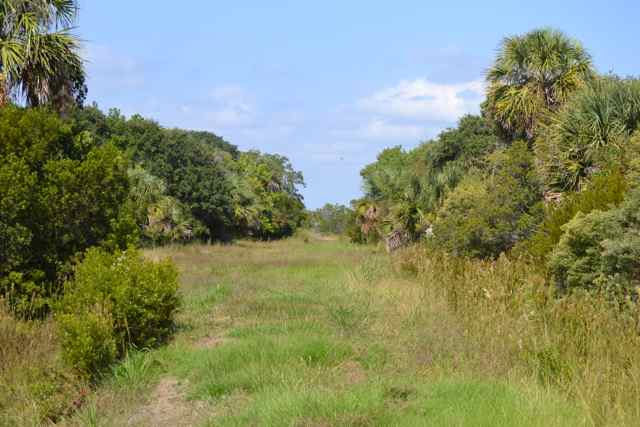 The access path to the beach at this location is a long straight path until it reaches the beginning of the secondary dunes, and takes a little jog to the left. I have made this walk a number of times, but was surprised to see the path graced with the delicate pink plume tops of sweetgrass along the trail, blowing in the wind.
The access path to the beach at this location is a long straight path until it reaches the beginning of the secondary dunes, and takes a little jog to the left. I have made this walk a number of times, but was surprised to see the path graced with the delicate pink plume tops of sweetgrass along the trail, blowing in the wind. 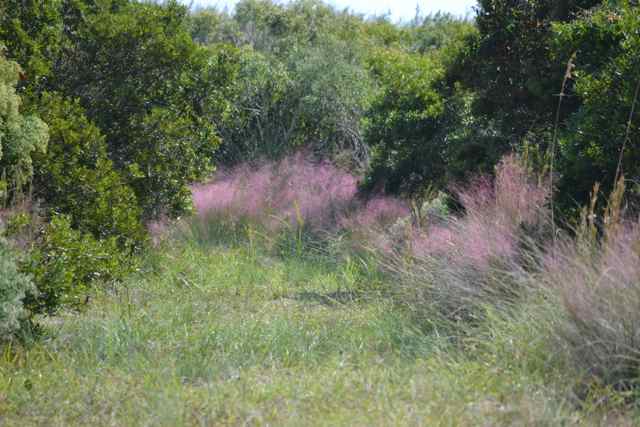
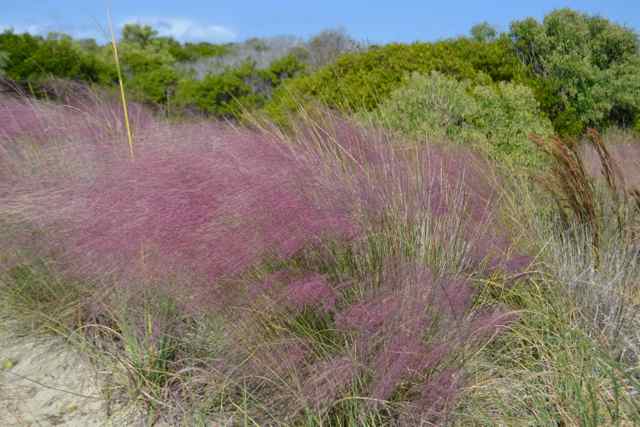 I recalled seeing sweetgrass in the fall on Lighthouse Island, but these were some fine stands of this essential plant for the quintessential Lowcountry basket. Close by the achenes of sea myrtles were attracting a variety of butterflies.
I recalled seeing sweetgrass in the fall on Lighthouse Island, but these were some fine stands of this essential plant for the quintessential Lowcountry basket. Close by the achenes of sea myrtles were attracting a variety of butterflies. 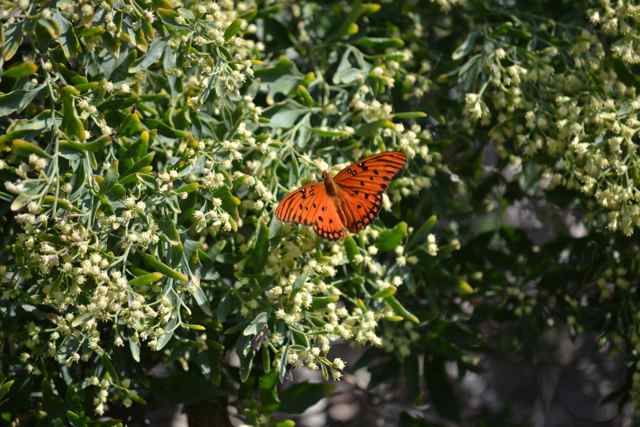 Another feature not previously noticed was a tiny pond in a swale between the dunes, appearing to have one alligator resident.
Another feature not previously noticed was a tiny pond in a swale between the dunes, appearing to have one alligator resident. 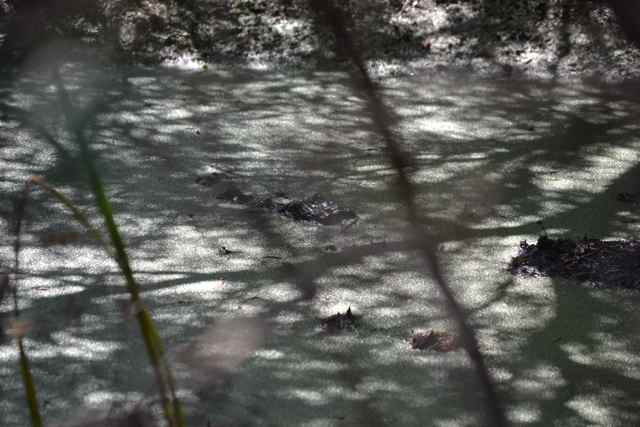 The sand spurs arrayed on my shoes and pants were not at all a surprise.
The sand spurs arrayed on my shoes and pants were not at all a surprise.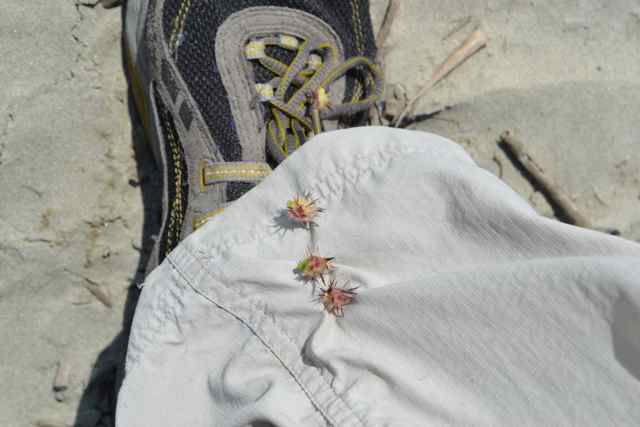
From the top of the primary dune ridge, a sparkling 360 degree panorama awaited: sea oat tasseled ridge dropping down to pink sweet grass and shrub forest finally meeting maritime forest; low tide strand stretching out northeast to the Boneyard; southwest view toward Price’s Inlet and barrier islands beyond; and shimmering Atlantic Ocean roiled by the northeast wind. 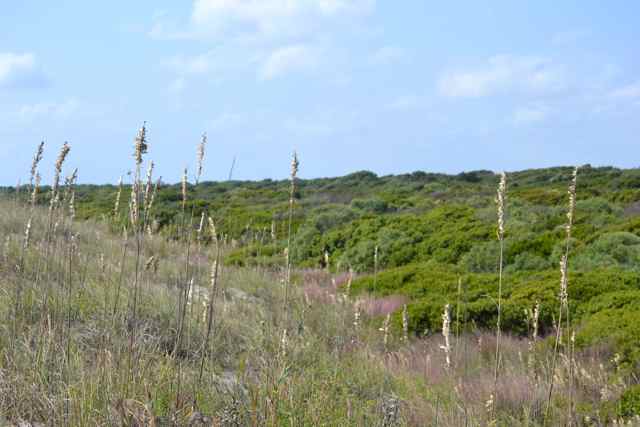
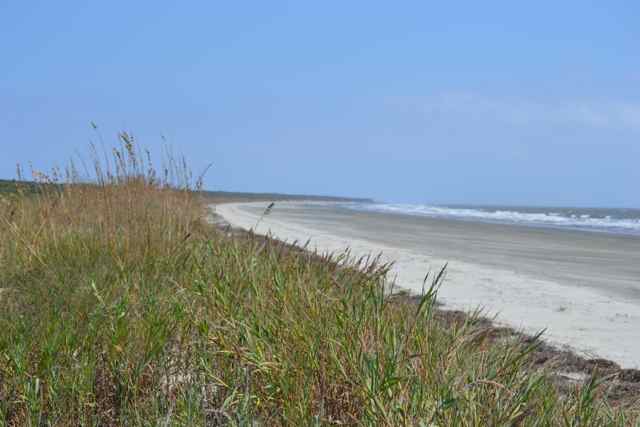
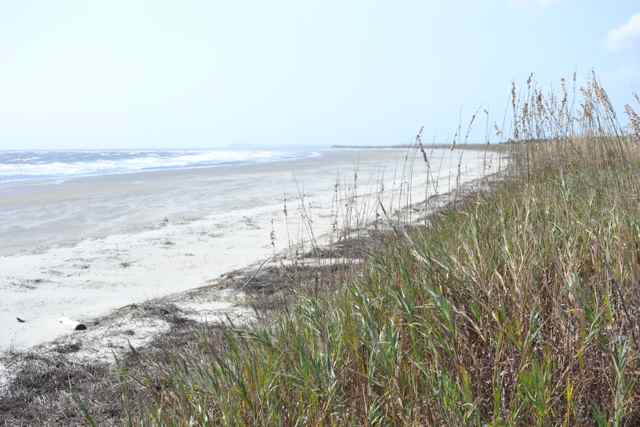
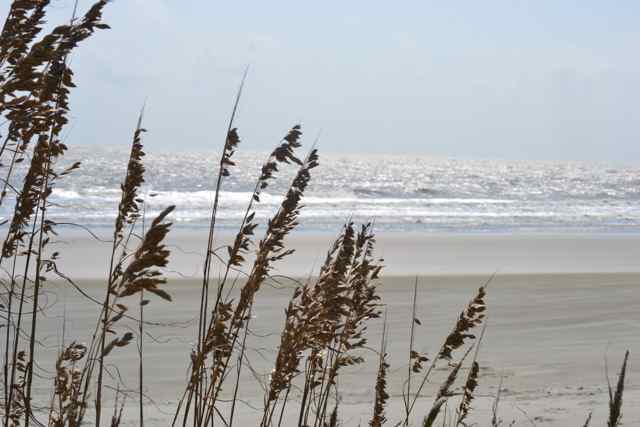 This path had been so little traveled through the dunes that there was no clear worn trail down to the beach. It was certainly off the beaten path, with no one in sight out on the flattened low tide shore. Much like the Bay was scoured of boaters by the strong northeast wind, the beach was receiving a similar treatment, though here the surface was finished further by blowing phalanxes of sand. I faced the blowing sands as I began my walk north.
This path had been so little traveled through the dunes that there was no clear worn trail down to the beach. It was certainly off the beaten path, with no one in sight out on the flattened low tide shore. Much like the Bay was scoured of boaters by the strong northeast wind, the beach was receiving a similar treatment, though here the surface was finished further by blowing phalanxes of sand. I faced the blowing sands as I began my walk north.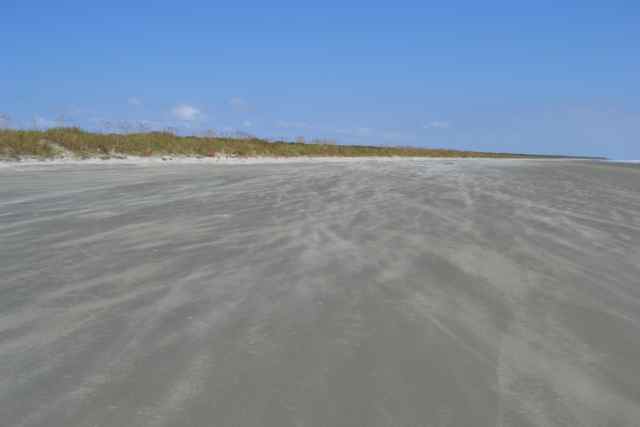
Walking the high tide line always brings surprises. There was nothing surprising about finding horseshoe crabs, and along the line was the usual collection of this year’s crop. There was also a good deal of cordgrass wrack from very high tides. A sign marking No. 550154 lay incongruously at the base of the dunes.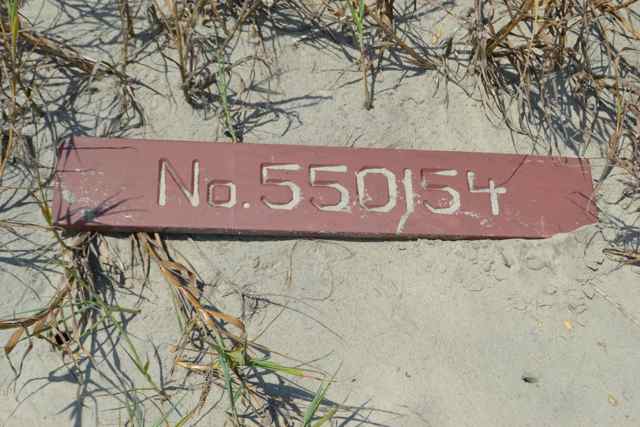
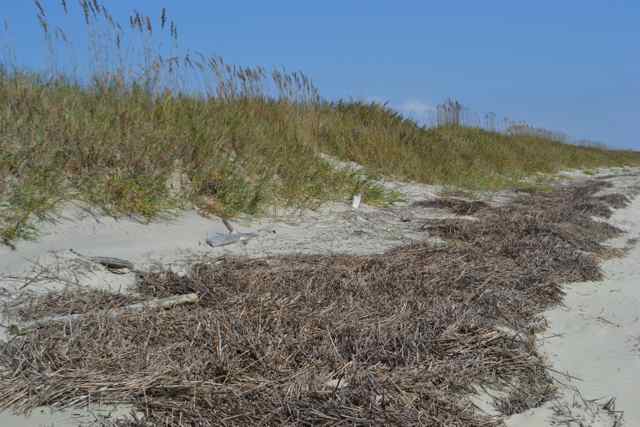 The beach and dunes south of the intersection with the Beach Road has an excellent profile for loggerhead nesting, but this island only gets about a tenth of the nests compared to dune-poor Cape Island to the north. At the base of the dunes Carolina saltwort provided some autumnal color.
The beach and dunes south of the intersection with the Beach Road has an excellent profile for loggerhead nesting, but this island only gets about a tenth of the nests compared to dune-poor Cape Island to the north. At the base of the dunes Carolina saltwort provided some autumnal color.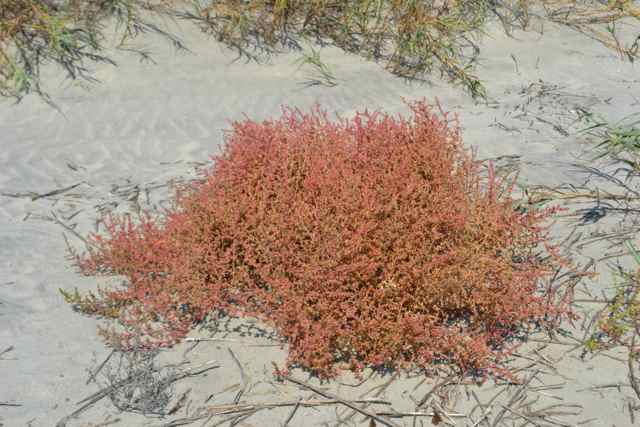
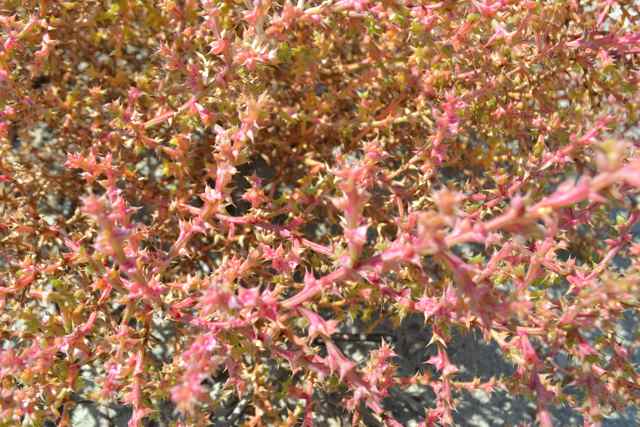 Along the way a small ghost crab did not move for my close approach, and a murex caught my eye.
Along the way a small ghost crab did not move for my close approach, and a murex caught my eye. 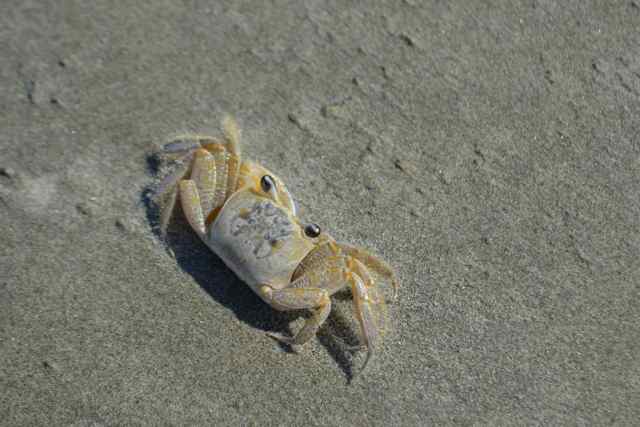
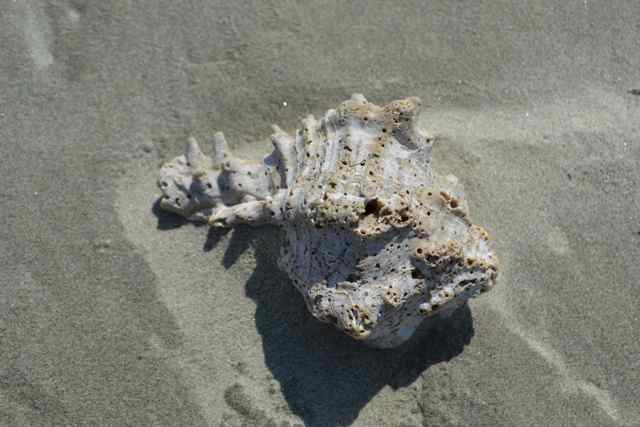 A raptor scudded before the wind over the shrub zone between the dunes and the forest, hunting for prey.
A raptor scudded before the wind over the shrub zone between the dunes and the forest, hunting for prey.
This was the same section of beach where I dug up a bottlenose dolphin skull several years ago. I had seen vultures on the beach ahead, and finally found their attraction: a dead young dolphin, about three feet long. 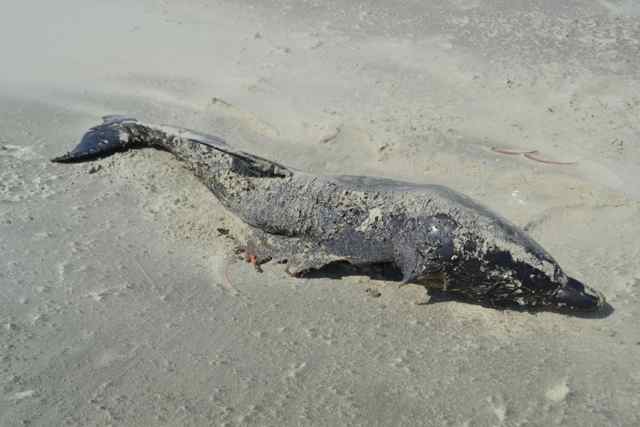
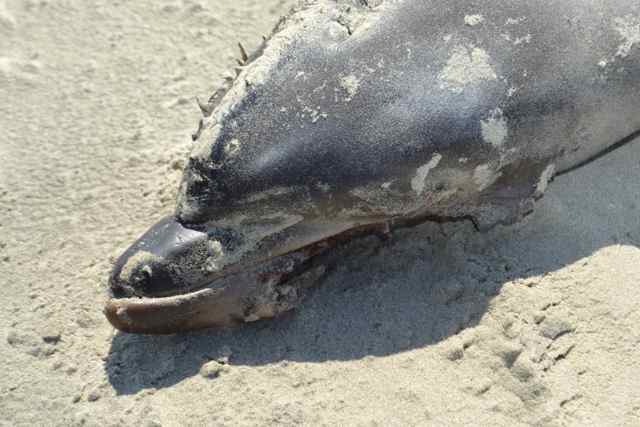 It was a sad surprise to find. Underneath it was opened up and exposed to the ribs, the viscera absent. The feel of the tail was of hard rubber as I moved it from the intertidal area to the base of the dunes in case the stranding needed reporting.
It was a sad surprise to find. Underneath it was opened up and exposed to the ribs, the viscera absent. The feel of the tail was of hard rubber as I moved it from the intertidal area to the base of the dunes in case the stranding needed reporting.
People finally appeared on the beach ahead, and marked the intersection with the Beach Road. Before making it there the solid line of dunes was breached by past storms, certainly Irene last fall. 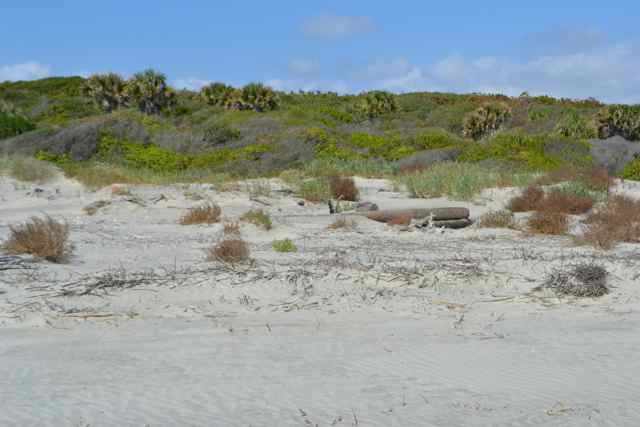 After speaking with the folks on the beach, students from Horry County Technical College, I made my way back across the island, encountering island visitors along the way. On the dike I ran into Will again, this time bearing his camera and returning the favor with a photo.
After speaking with the folks on the beach, students from Horry County Technical College, I made my way back across the island, encountering island visitors along the way. On the dike I ran into Will again, this time bearing his camera and returning the favor with a photo. 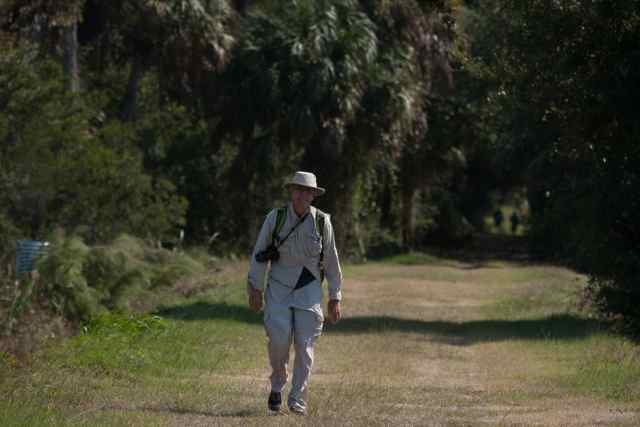 I shared with him a few of my highlights, both beautiful and sad, and he helped with my identification of the scudding raptor.
I shared with him a few of my highlights, both beautiful and sad, and he helped with my identification of the scudding raptor.
Returning to the dock and Kingfisher, I noticed there was no easing of the wind strength, and maybe the contrary. 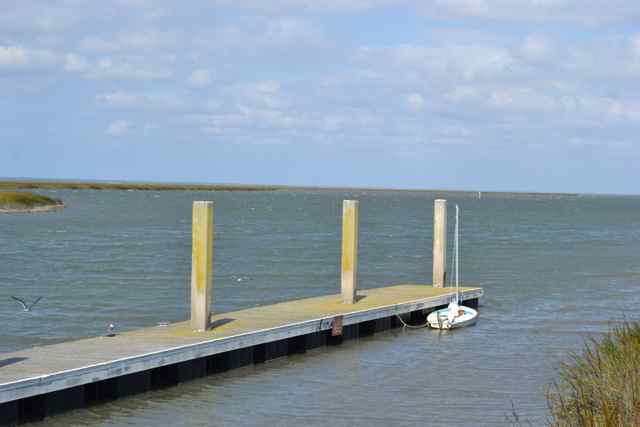 After making careful preparations I was off sailing close hauled in Summerhouse Creek. I only needed a couple of tacks before bearing off across the shoal into the ferry route section of Bull Creek. Another raptor passed in front – my first eagle of the season. I would pass shrimpers around the next bend, and found from them that the conditions were not conducive for their pursuit. The sailing was jagged, with puffs of wind and direction changes due to the marsh interference, requiring jerking of helm and sheet. Reaching the projection of the Andersonville Creek I began my beat to windward against the incoming tide. Here the wind had an unfettered fetch through the creek’s opening in the marsh, and there were relatively smooth waters from what I had earlier experienced. I was finally able to bear off and reach through the remainder of the bends to the ICW and our landing. On the way home trailing Kingfisher, an osprey flying on the edge of the upland’s forest added one more raptor to the day’s sightings.
After making careful preparations I was off sailing close hauled in Summerhouse Creek. I only needed a couple of tacks before bearing off across the shoal into the ferry route section of Bull Creek. Another raptor passed in front – my first eagle of the season. I would pass shrimpers around the next bend, and found from them that the conditions were not conducive for their pursuit. The sailing was jagged, with puffs of wind and direction changes due to the marsh interference, requiring jerking of helm and sheet. Reaching the projection of the Andersonville Creek I began my beat to windward against the incoming tide. Here the wind had an unfettered fetch through the creek’s opening in the marsh, and there were relatively smooth waters from what I had earlier experienced. I was finally able to bear off and reach through the remainder of the bends to the ICW and our landing. On the way home trailing Kingfisher, an osprey flying on the edge of the upland’s forest added one more raptor to the day’s sightings.
Thank you so much for sharing your coastal experiences with us.
I’m glad you enjoyed, and I am always anticipating my next trip.
Great post.